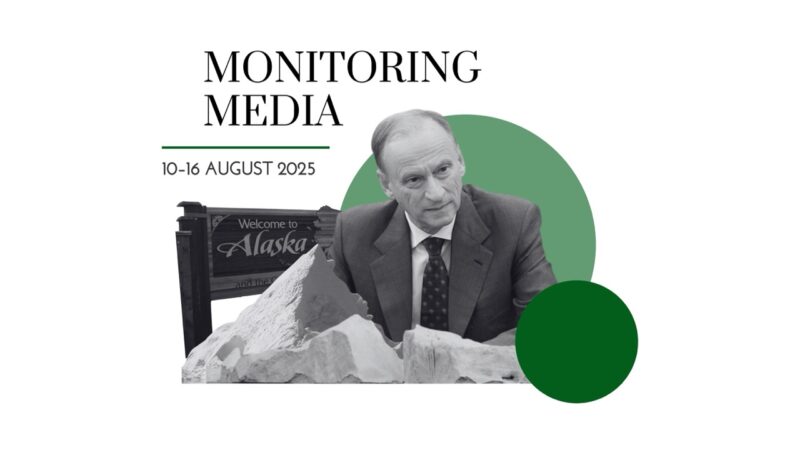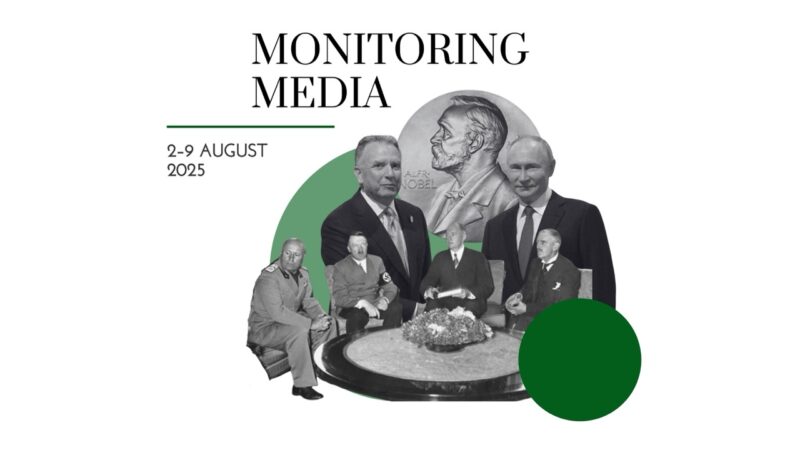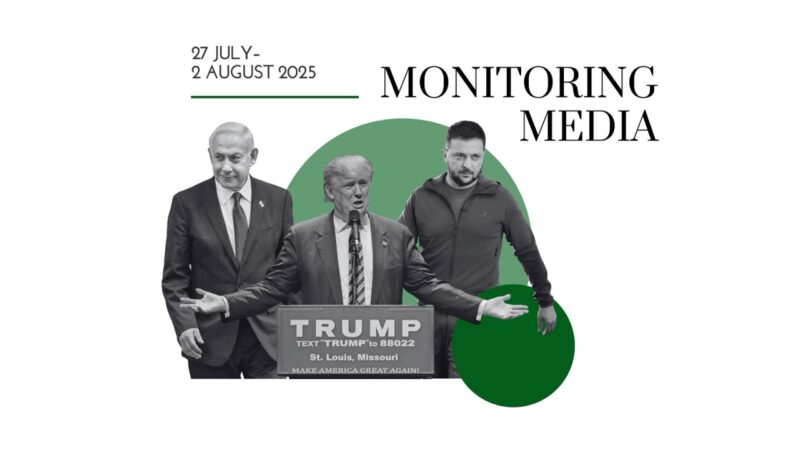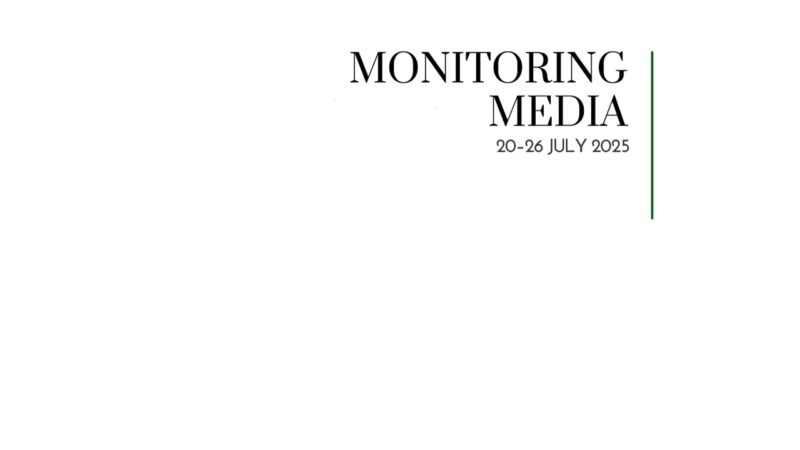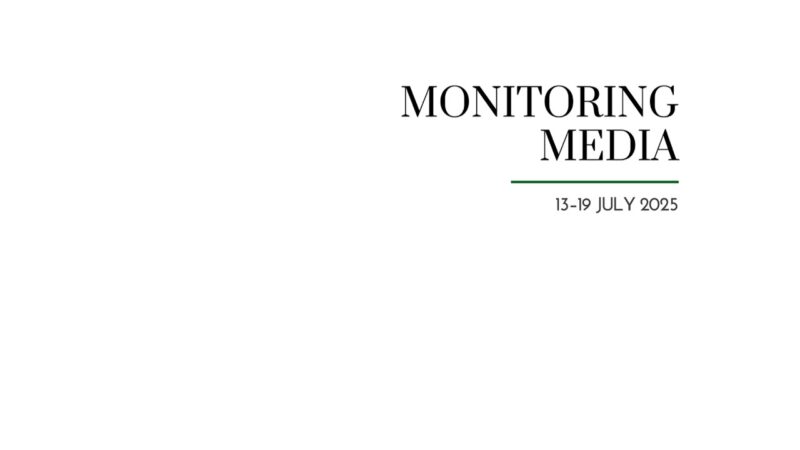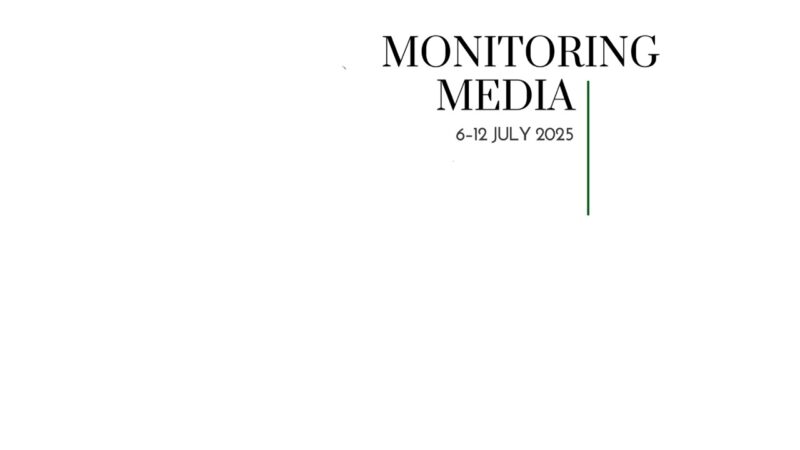Russia is flooding the West with disinformation

CIUS weekly report on North American media coverage of Ukrainian affairs, 26 May–1 June 2024
Six publications (The Washington Post, The Economist, Foreign Affairs, Globe and Mail, Toronto Star, and Foreign Policy) were selected to prepare this report on how Ukraine has been portrayed in the North American press during the past week. The sample was compiled based on their impact on public opinion as well as on their professional reputation, popularity among the readership, and topical relevance. These publications represent centrist viewpoints on the political spectrum.
This MMS report covers only the most-read and relevant articles about Ukraine, as ranked by the respective North American publications themselves in the past week. Its scope covers promoted articles on home pages and articles from special sections on Ukraine, with the hashtag #Ukraine, from the paper editions of the publications, and about Ukraine from opinion columns and editorials.
Featured topics
- The world and Ukraine: Europe needs to rearm faster; Ukraine needs a military strategy to outlast Russia; Washington’s red lines may change; Canada supports Ukraine strikes inside Russia with West’s weapons;
- Russia at war: Russia is flooding the West with disinformation; attacks on Russian liberals reveal Putin’s insecurity.
MMS summaries
Russia is flooding the West with disinformation. Lee Hockstader (Washington Post) argues that Russia has actively started spreading disinformation in Europe ahead of the European Parliament elections. In 2022 Europe was already experiencing Russian disinformation operations: “The Moscow-run effort cloned the websites of legitimate newspapers, magazines and news services, including Britain’s Guardian and Germany’s Bild, posted replicas under similar domain names, and filled them with Kremlin propaganda.” It was not a stunning campaign, but shockingly these online resources have survived to this day: “The sites’ persistence reflects the flood of Russian interference—and the near-impossibility of monitoring it, let alone stopping it—ahead of elections next month for the European Parliament.” The main attacks of Russian disinformation are directed against Ukraine: “A website impersonating France’s Defense Ministry announced 200,000 French recruits would be sought for service in Ukraine. A well-known German broadcast journalist known as ‘the Putin connoisseur,’ and sympathetic to Moscow, was revealed to have been paid more than $600,000 by a Russian billionaire allied with the Kremlin.” Russia’s war against Ukraine has removed barriers to Moscow’s use of various disinformation tools. The US may face a similar or even greater challenge this fall ahead of the presidential election. According to Hockstader, if Europe fails to respond to this challenge, “which looks increasingly likely — then the picture will look even grimmer elsewhere. Especially in the United States, where dysfunctional politics and First Amendment safeguards make monitoring Russian mischief even harder.”
Europe needs to rearm faster. Editorial analysis by The Economist focuses on the shortage of TNT and other propellants for shells and missiles in Europe, which Ukraine so badly needs today. Since 2022 the EU has tried to increase production of artillery shells and missiles. However, Brussels has failed to fulfil its commitments: “In January the EU admitted that it had fallen well short of its pledge to provide Ukraine with one million shells by March 2024.” Brussels has launched a programme and allocated an additional €500 million to accelerate the production of weapons needed for both European security and support for Ukraine: “Europe needs bushels of combustibles to reach its target of producing 2m shells a year by the end of 2025. Each artillery shell is crammed with 10.8 kg of a high explosive such as TNT, HMX, or RDX. Additional propellant charges are also needed to hurl the rounds over tens of kilometres.” The key problem for increasing weapons production is the lack of explosives: “The trouble is that explosive makers are unsure that production can be cranked up and fear that the quirks of the industry will hamper the surge that Ukraine needs to remain competitive on the battlefield.” Other challenges faced by explosives manufacturers include an industry-wide shortage of skilled workers and dependence on cotton lint exports from China. Nevertheless, according to the editorial, there are also optimistic trends: “EU-wide annual shell production is projected to reach at least 1.4m by the end of 2024, up from around 500,000 a year ago.” “Yet as Russia’s summer offensive gets under way, that is not quick enough to help shell-starved Ukrainians.”
Ukraine needs a military strategy to outlast Russia. Keith L. Carter, Jennifer Spindel, and Matthew McClary (Foreign Affairs) emphasize that Ukraine must change its strategy to defeat Russia in the war. Currently, many skeptics are calling on Kyiv to negotiate with Moscow, justifying this move by Ukraine’s inability to compete with Russia in terms of resources: “a larger population, greater defense industrial capacity, and well-prepared defenses in the Donbas, Kherson, and especially Crimea.” In addition, the Western weapons that came to Ukraine either did not meet the request or arrived late: “Instead of the midrange arms that constitute most of Kyiv’s Western support, the counteroffensive called for more sophisticated Abrams tanks, F-16 fighter jets, HIMARS rocket launchers, and Patriot missiles.” The authors concede all the above, but it does not mean that Kyiv should give up: “Instead, it needs a new approach. A better strategy would economize on the use of Ukrainian forces and conserve the limited material they receive from the United States and European partners.” Kyiv must learn to do more with less: “It must avoid attritional battles, conserving manpower and material to be able to respond to changing conditions.” According to Carter, Spindel, and McClary, “Ukraine must adjust the way it organizes, equips, and thinks about the war, switching out head-on confrontation with Russian forces for an asymmetric, guerrilla-style approach. Doing so will no doubt prolong the fighting, but a pivot to unconventional warfare offers the best chance for Ukraine to chip away at Russian resolve, both on the front lines and at home.”
Washington’s red lines may change. David Ignatius (Washington Post) is convinced that Moscow’s successes on the battlefield are pushing the White House to reconsider red lines. Washington is currently considering strengthening its support for Ukraine with two new tough countermeasures: “punishing China for supplying key technology to Moscow and lifting limits on Ukrainian use of US short-range weapons to attack inside Russia.” Such a step would mean an escalation in Washington’s relations with Moscow and, more importantly, with Beijing. New sanctions against China would be an extremely sensitive issue for the US, as both states are currently trying to stabilize their bilateral relations. However, Beijing’s actual support for Moscow leaves Washington with no choice: “China was Russia’s largest supplier of 50 ‘high priority’ dual-use items. The customs data also showed that China’s share of Russia’s imports of these goods had risen from 32 percent in 2021 to 89 percent last year.” These “high priority” dual-use items are used by Russia to build up its military capabilities: “China was supplying about 70 percent of Russia’s imports of machine tools and 90 percent of its imported microelectronics. China is also providing Russia with satellite technology that can be crucial for communications and targeting in the Ukraine battlespace.” Ukraine’s vulnerability is partly due to the delay in the delivery of US weapons and the ban on their use deep inside Russia. But this may soon change, as Washington is pressured by allies to lift the ban. According to Ignatius, “We might be nearing another inflection point in Ukraine. As China leans harder into its partnership with a newly dominant Russia, Biden is weighing whether to deepen his alliance with Kyiv. This would bring new risks, but it would make sense if it could bolster a wobbly Ukraine and rebalance the negotiating table, which is where this war must eventually be settled.”
Canada supports Ukraine using NATO arms inside Russia. Dylan Robertson (Toronto Star) reports that Canadian Foreign Affairs Minister Mélanie Joly indicated strong support for allowing Ukraine to use NATO-provided arms inside Russia, amidst ongoing discussions within the military alliance. At a news conference in Stockholm, Joly emphasized the need for an assertive approach, saying that “Russia has no red line, and so that is why we need to make sure that when it comes (to) Ukraine’s defence, that we’re there to help them.” This position aligns with sentiments expressed by NATO Secretary-General Jens Stoltenberg, who advocated lifting those restrictions on Ukraine, asserting that “the right to self-defence includes hitting legitimate targets outside Ukraine.” Despite some NATO members’ reservations about escalating the situation, Joly confirmed that Canada imposes no restrictions on Ukraine’s use of its donated arms. This stance was echoed by Ukrainian ambassador Yuliya Kovaliv, who noted that Canada’s military aid, including tanks and ammunition, is primarily utilized within Ukraine. Joly’s comments come as part of broader efforts by Global Affairs Canada to shore up domestic and international support for Ukraine, with a particular focus on countering Russian disinformation and encouraging developing nations to attend a Ukraine peace summit scheduled for 15–16 June. Kati Csaba of Global Affairs Canada highlighted the challenge of maintaining support: “It is absolutely a risk, Ukraine fatigue, and especially in light of more recent crises,” Csaba noted. “We need to be conscious of the fact that we cannot just rely on Canadian support for Ukraine to be eternal; we need to keep actively pursuing that.”
Conscription debate resurfaces amid recruitment woes in Canada, continued Russian threat. Kevin Patterson (Globe and Mail) reminds readers that in recent months, the debate on mandatory military service has resurfaced in the West due to rising security concerns stemming from Russia’s war against Ukraine. British Prime Minister Rishi Sunak’s recent proposal for national service reflects this shift, marking a potential revival of conscription as a strategic response to the evolving threat landscape in Europe. “Russia’s aggression toward Ukraine could spread to other countries in Europe,” warns former NATO commander General Sir Richard Sherriff, emphasizing the need for the UK to prepare for a potential land war. This sentiment is echoed by Sir Patrick Sanders, head of the UK’s army, who has suggested reintroducing conscription to address the inadequacy of the current volunteer force. The possibility of conscription extends beyond the UK, with several European countries already reintroducing or considering the practice. Nations like Sweden, Lithuania, and Latvia have reinstated mandatory service in response to regional instability, and Germany’s Defence Minister has called for its restoration. This resurgence is driven by the urgent need to bolster military capabilities amid the threat of Russian expansionism. “Among the mildest of consequences of Russian conflict with a NATO member would be conscription becoming usual, even universal, in the Western democracies,” Patterson stresses, underscoring the potential normalization of conscription across Europe. The potential resurgence of conscription has significant implications for Canada, which has been grappling with personnel issues within its military forces. Despite its distance from the immediate threat in Europe, Canada is under increasing pressure to enhance its military contributions to NATO. This comes at a time when the Canadian Armed Forces are facing significant challenges: the evolving security landscape in Europe might compel Canada to reconsider its longstanding opposition to conscription, especially if the threat from Russia continues to escalate and NATO allies call for greater collective defence efforts.
Attacks on Russian liberals reveal Putin’s insecurity. Justin Ling (Foreign Policy) interviews Vladimir Milov, a Russian dissident, who reflects on the precariousness and danger of opposing Russian leader Vladimir Putin, following a brutal attack on his compatriot Leonid Volkov in Vilnius (a long-time ally of the late Russian opposition leader Alexei Navalny, Volkov was attacked with hammer in Lithuania in March—MMS). Milov notes the occupational hazards of challenging Putin, emphasizing that such violence is expected in their line of work. This attack underscores the Kremlin’s escalating efforts to suppress opposition, particularly through physical intimidation and imprisonment. Milov highlights the Kremlin’s “billions and billions of rubles” spent to crush dissent, indicating the perceived threat that opposition movements still pose to Putin’s regime. Despite Moscow’s aggressive tactics, Milov remains determined, pointing to the sustained spirit of resistance within the movement. He also drew historical parallels between the current Russian state and the twilight years of the Soviet Union, suggesting that the superficial strength of the economy masks deeper issues. He compared today’s “Potemkin GDP” with the Soviet Union’s positive GDP growth right before its collapse, arguing that economic hardships faced by ordinary Russians, such as high inflation and reliance on China, reveal the regime’s fragility. Milov underscores that even with the Kremlin’s wielding propaganda and repression, the dissatisfaction among ordinary Russians is evident. Reflecting on the managed democracy and the rigged presidential election, Milov notes that Putin’s legitimacy is increasingly dependent on extraordinary measures to force public compliance. “Putin’s message of absolute power is less convincing when it requires such extraordinary efforts to attain,” Milov says, signalling the potential for significant change driven by growing public discontent.
